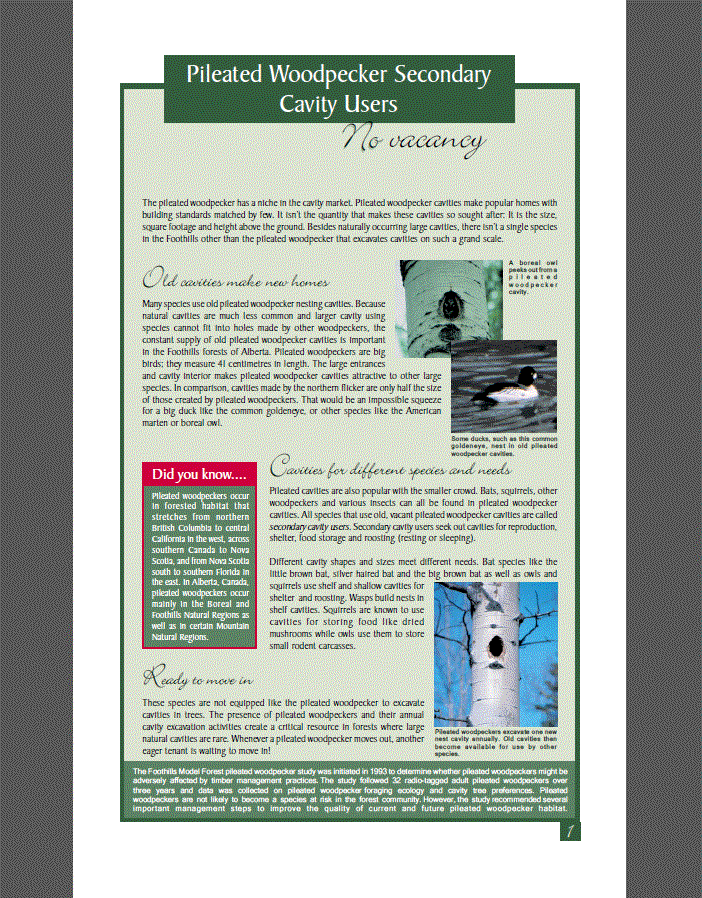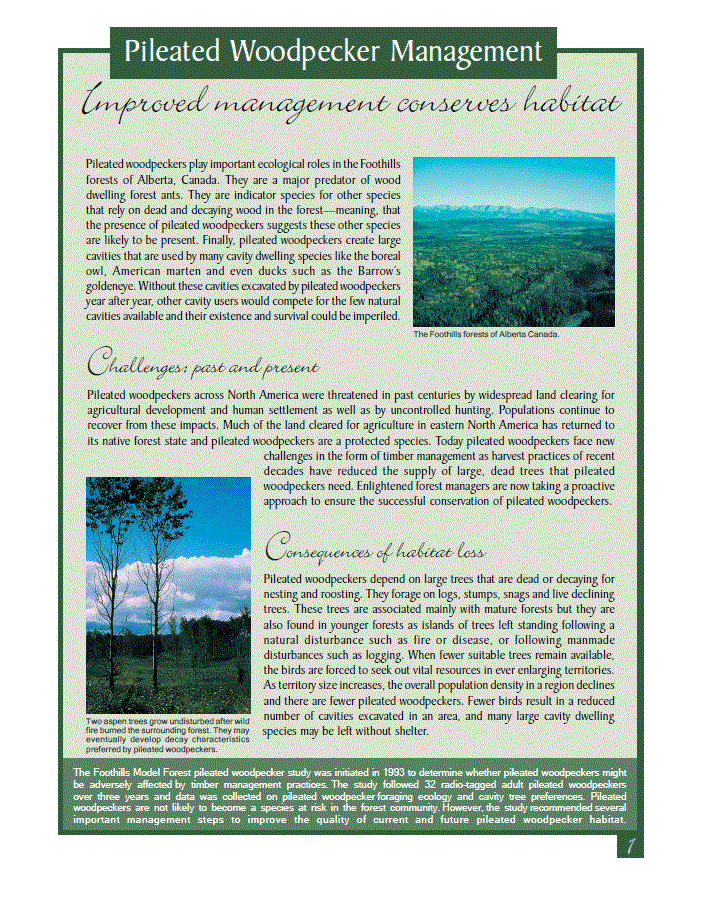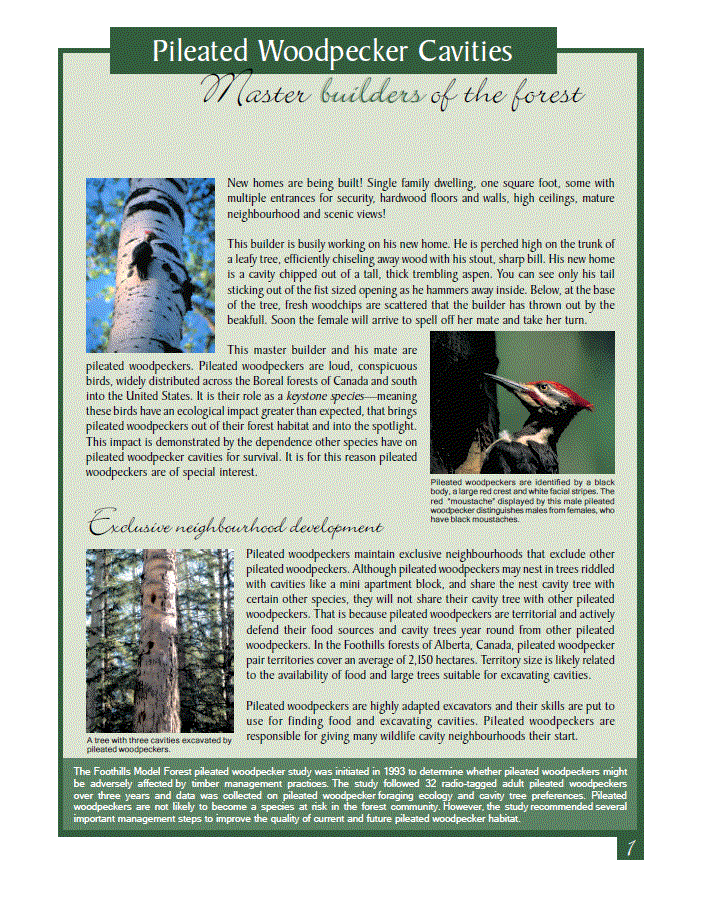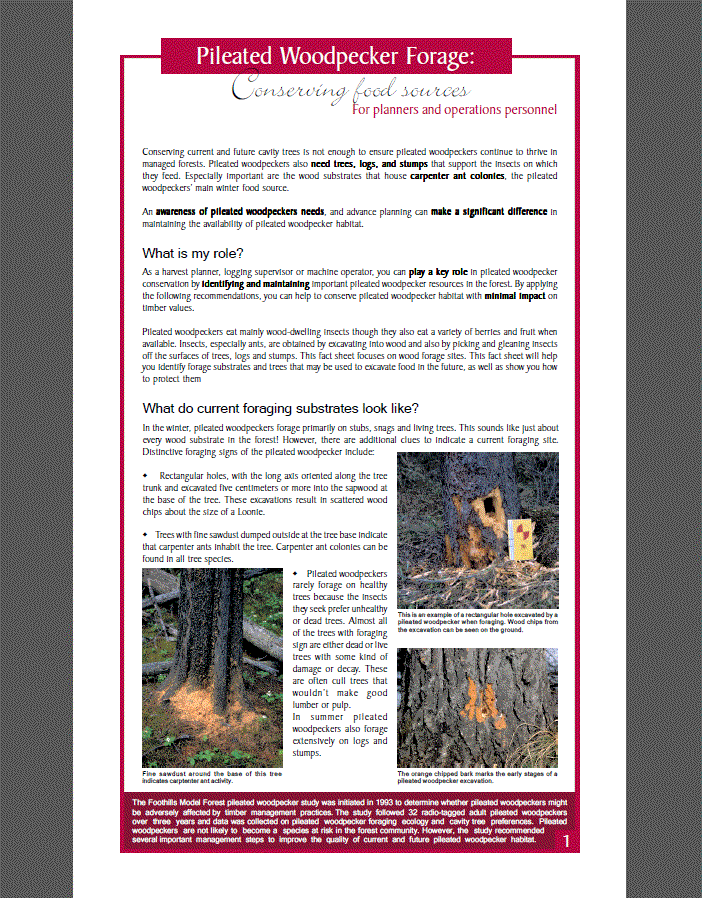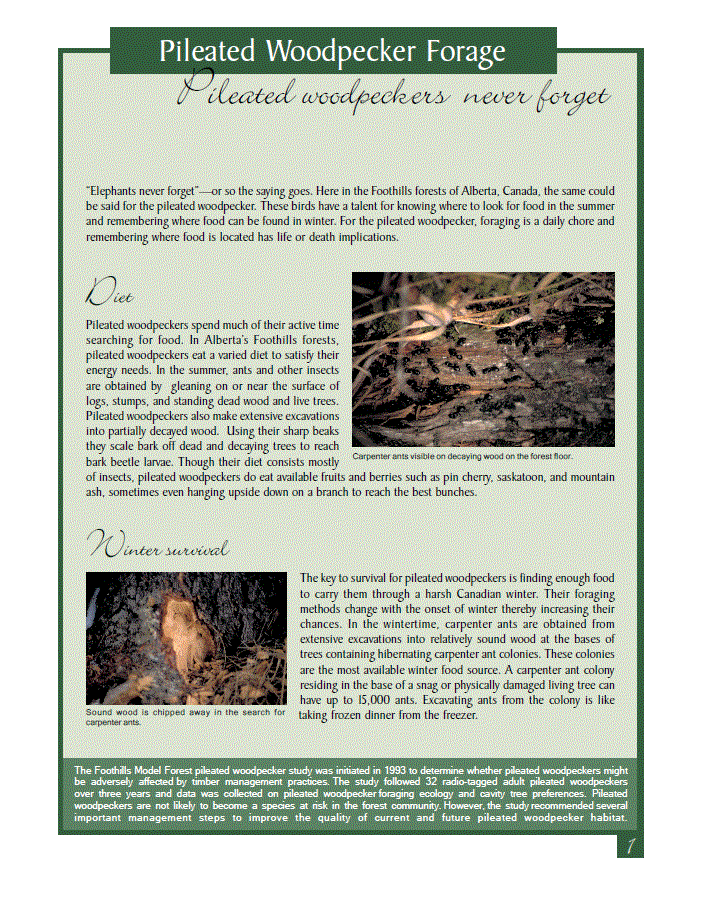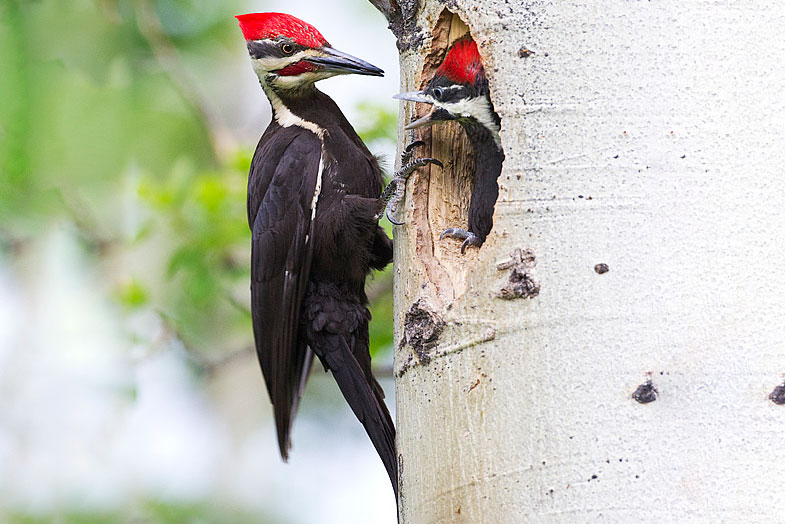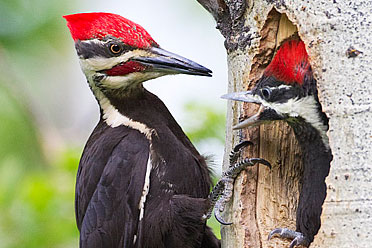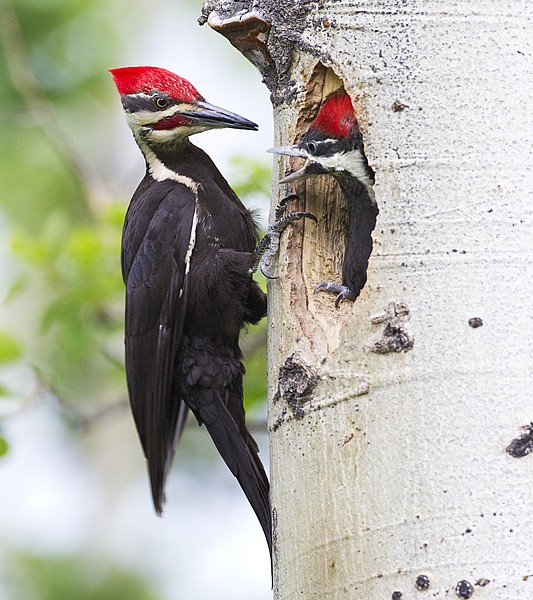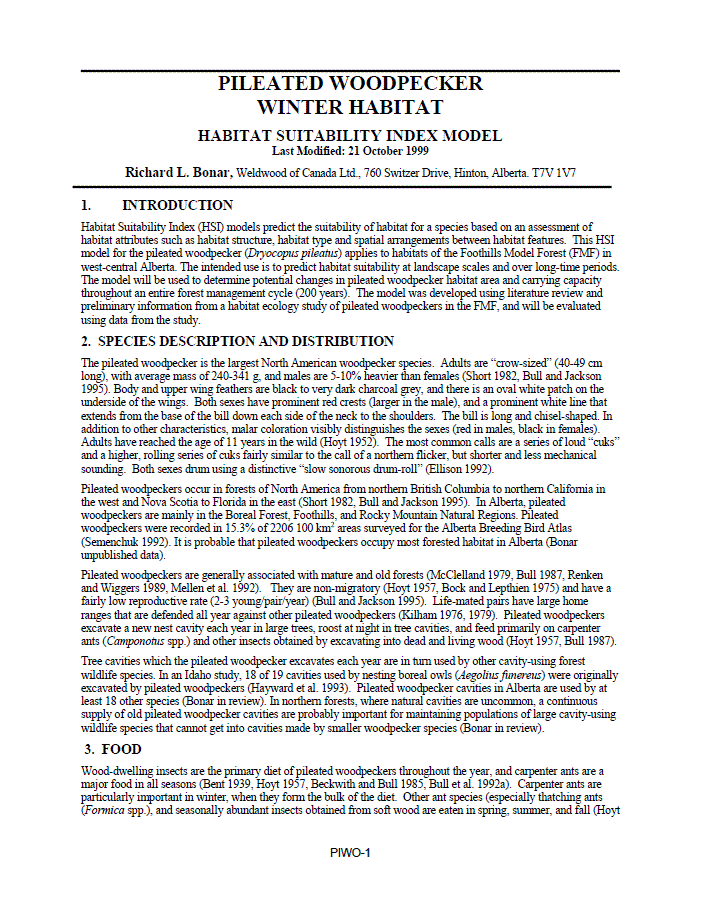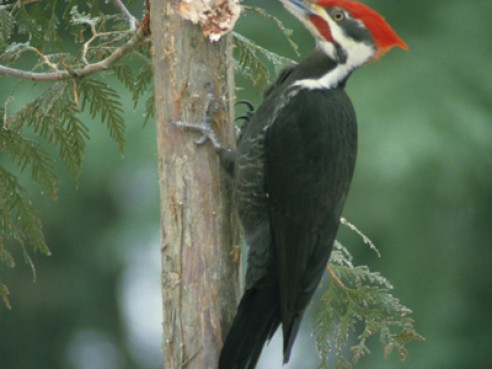
Pileated Woodpecker Project
Little is known about pileated woodpecker (Dryocopus pileatus) habitat ecology in western boreal cordilleran forests. To evaluate these relationships, Rick Bonar conducted a 5-year study, from 1993 until 1997, near Hinton in the foothills of west central Alberta, with additional information about cavity trees collected from a larger area. He evaluated habitat use in 14 pileated woodpecker pair territories at territory, stand, site, substrate, and substrate position scales using radiotelemetry and direct observation.
Pileated woodpeckers used all available habitat at all scales examined. Large wood foraging substrates containing carpenter ants (Camponotus spp) and cavity trees with stem decay, especially trembling aspen (Populus tremuloides), were selected and small substrates and healthy trees were avoided. Habitat use and selection were strongest at the substrate and position scales. Pair territories averaged 2,156.6 ha in size, which was more than 4 times larger than reported in previous studies. Territory size was inversely related to density of potential foraging substrates and cavity trees. Habitat variables and territory size were not related to adult survival and productivity, which were the highest reported for pileated woodpeckers. Territories contained 4–48 cavity trees. There was an average of 2.2 cavities/km2 and cavity production exceeded cavity loss during the study period. There was an apparent surplus of cavities available during all seasons. Of those cavities inspected, 44.6% were used by pileated woodpeckers, more than18 other species used 66.6%, and 22.3% were empty. Pileated woodpeckers used all available habitats at the territory and stand scales and they selected large dead and damaged trees at the substrate and position scales. They are not mature or old forest obligates, but they may be good indicators for ecological function.
Pileated woodpecker cavities are an important resource for cavity-using wildlife in western forests, and they may be a critical resource for large secondary cavity-using species that are too large to enter cavities excavated by smaller woodpeckers. Forest managers should conserve existing dead wood resources and reserve living trees to provide future living trees and dead wood suitable for pileated woodpecker use. Existing pileated woodpecker cavity trees should be protected and strategies should be implemented to support continued production of new cavity trees.








